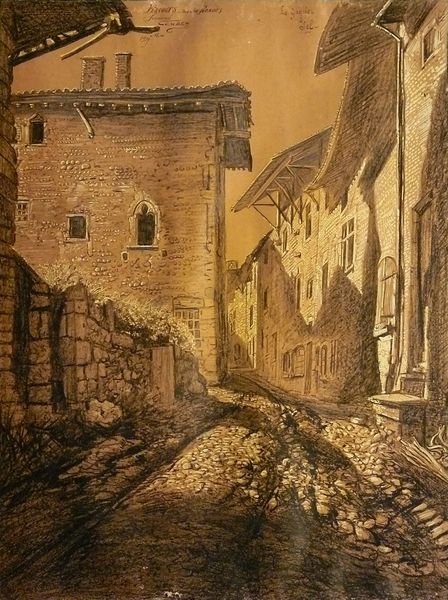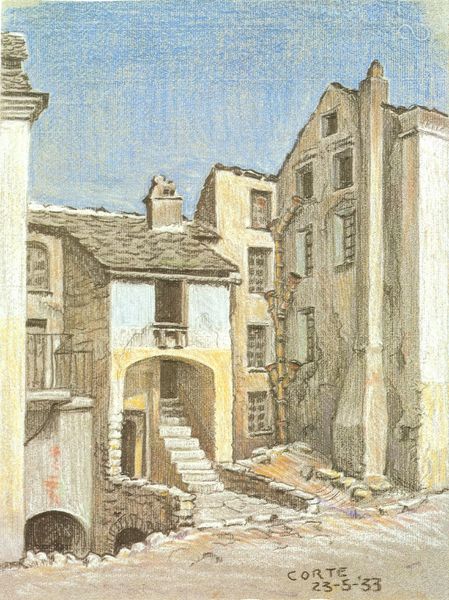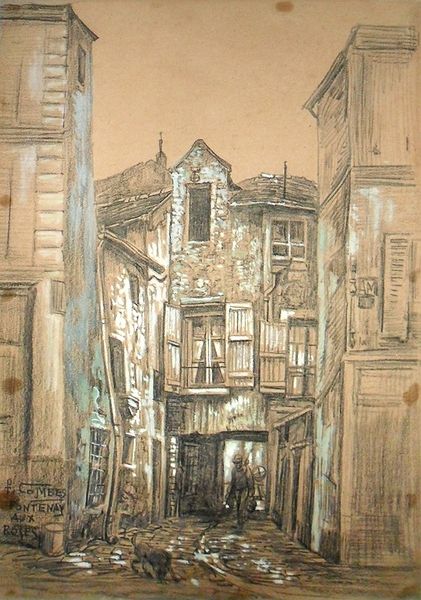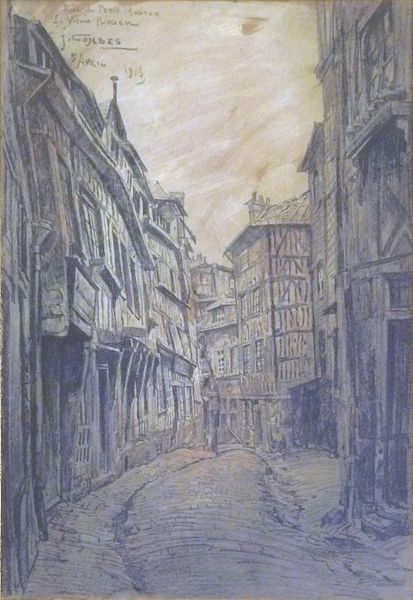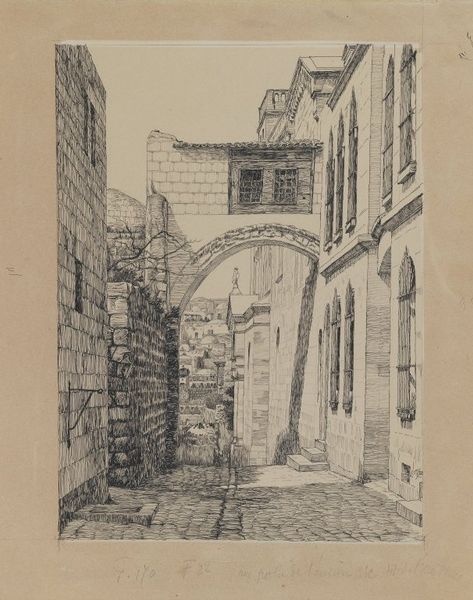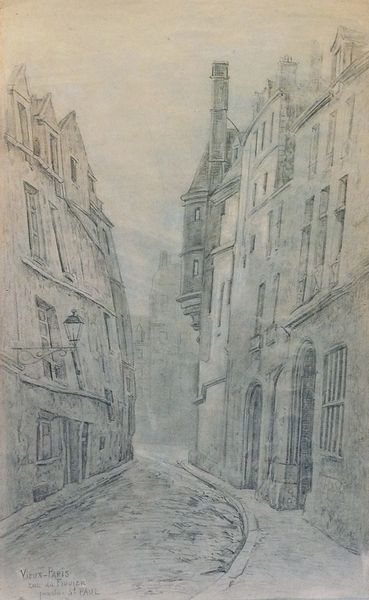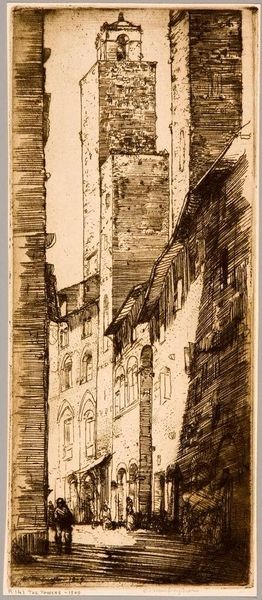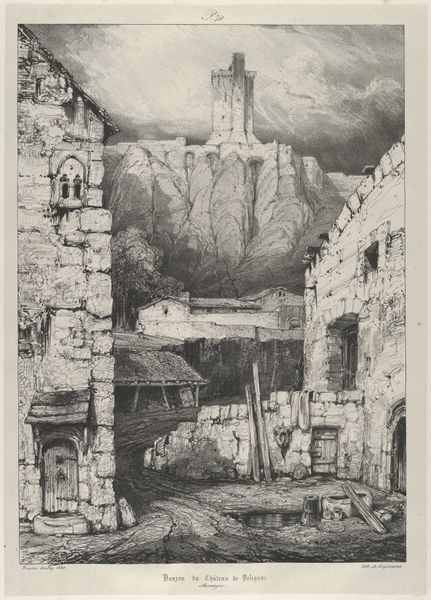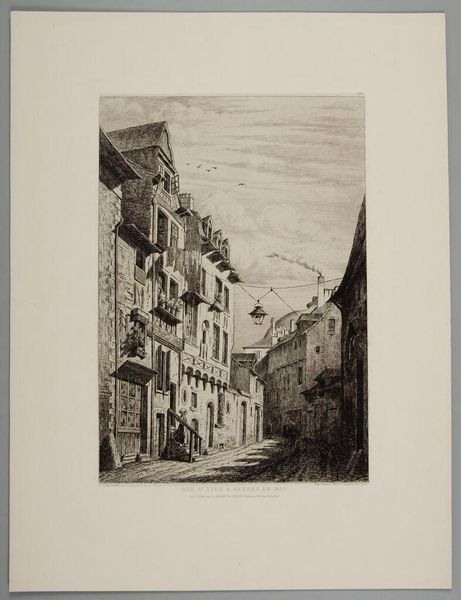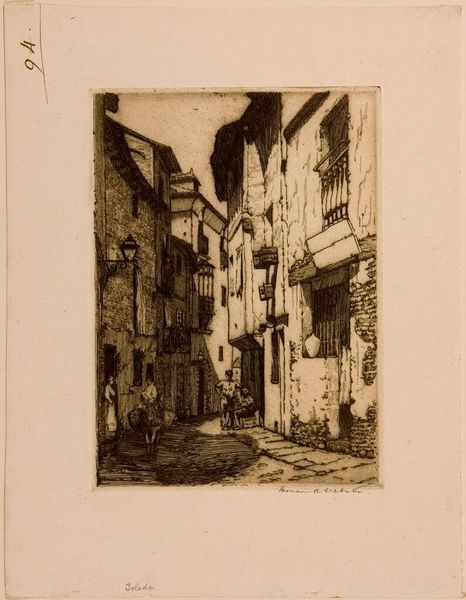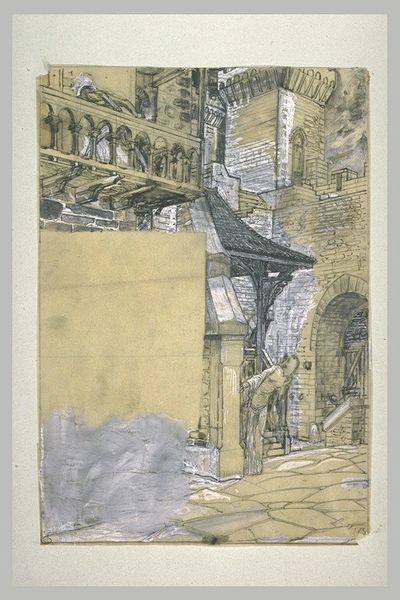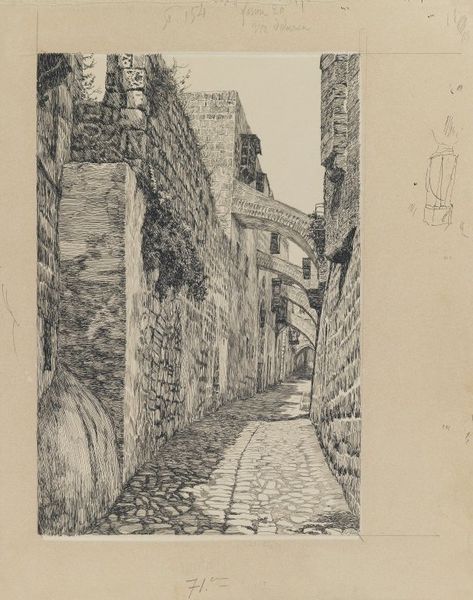
Le Puits Qui Parle Des Anciens Palais Des Ducs De Savoie, Bourg En Bresse, Rue Du Gouvernement 1919
0:00
0:00
Dimensions: 65 x 50 cm
Copyright: Public domain
Curator: This is Fernand Combes’ “Le Puits Qui Parle Des Anciens Palais Des Ducs De Savoie, Bourg En Bresse, Rue Du Gouvernement,” made with colored pencils in 1919. Editor: It feels strangely desolate for a city scene, doesn't it? All hard stone, but soft pencil work... almost dreamlike in its stillness. Curator: Cityscapes often serve as palimpsests. Consider what's absent: the figures of the Duc’s court, now replaced by, quite literally, a well speaking of their memory. Editor: The choice of colored pencils makes it interesting. It softens the edges, disguising, but it is clearly still made of colored material—mined, processed, bought. Each stage has its story and adds to the image’s historical narrative. Curator: Indeed. Pencils, though perhaps accessible, also suggest an ephemeral quality, a story easily erased or redrawn. What tales do you think this "speaking well" whispers to those who linger long enough to listen? The location may provide hints—"Rue du Gouvernement" resonates power, though power passed. Editor: I am stuck with that contrast though. The deliberate hand, creating a rough sketch in fine lines but monumental subjects. The colored aspect could simply provide beauty but it hints at larger colonial trade and access networks. This creates questions, how we see our relation to objects versus art itself? Curator: Perhaps Combes used the humble colored pencil to invite that consideration—to find monumentality in the mundane, or to question the structures themselves. The very choice democratizes art, pushing against grand pronouncements of history. Editor: It makes one think about labor and what each person brings to creation or simply existing at a moment like this. The pencils might suggest fleeting sketches, a daily record perhaps by the artist. Curator: So much embedded, wouldn’t you agree? From Combes' impressions of a past grandeur to the tangible reality of pigments, and to how that moment then speaks to our present understanding. Editor: Yes. Thinking of this scene, I am grateful for considering how seemingly simple means transform history. Thank you.
Comments
No comments
Be the first to comment and join the conversation on the ultimate creative platform.
